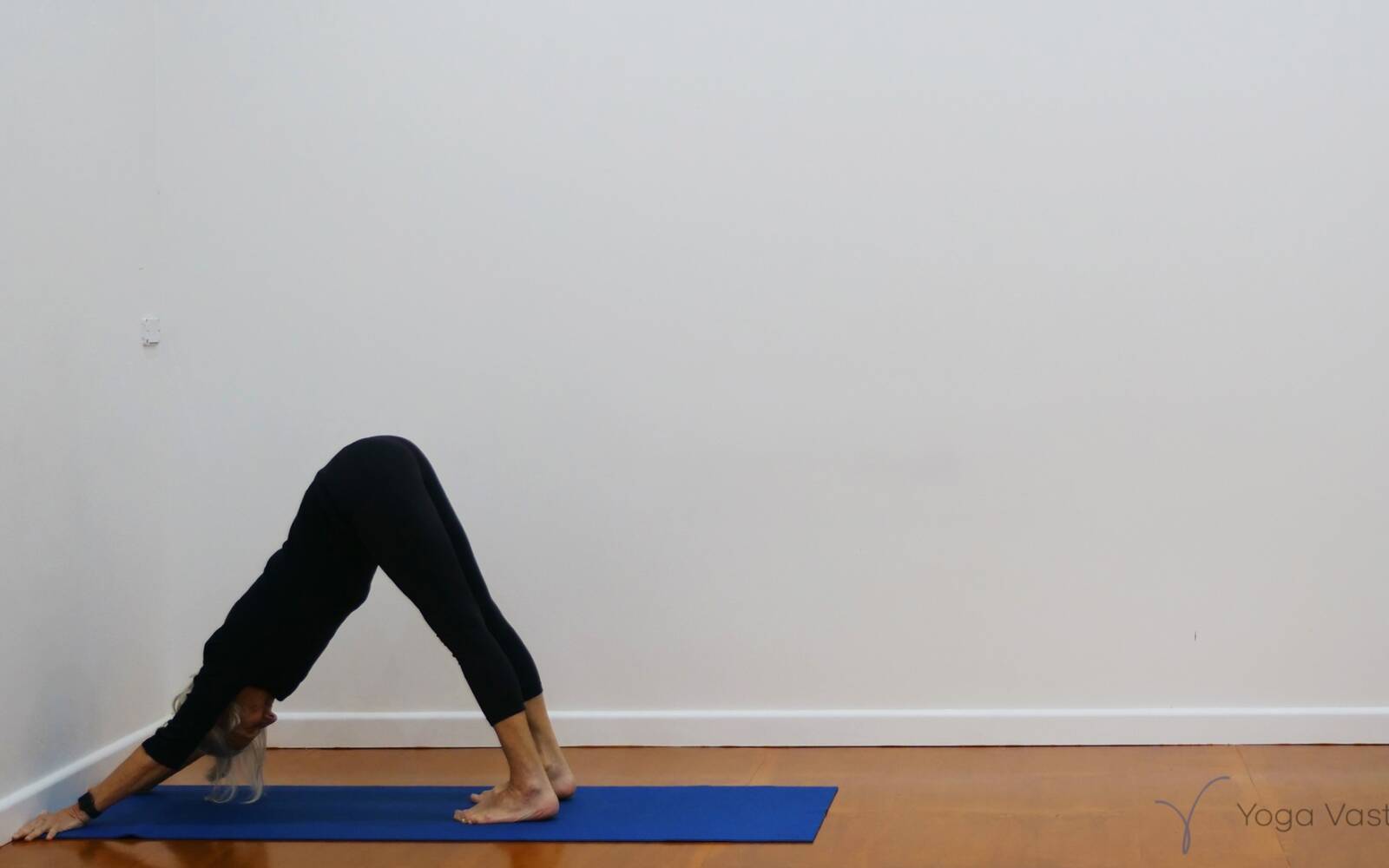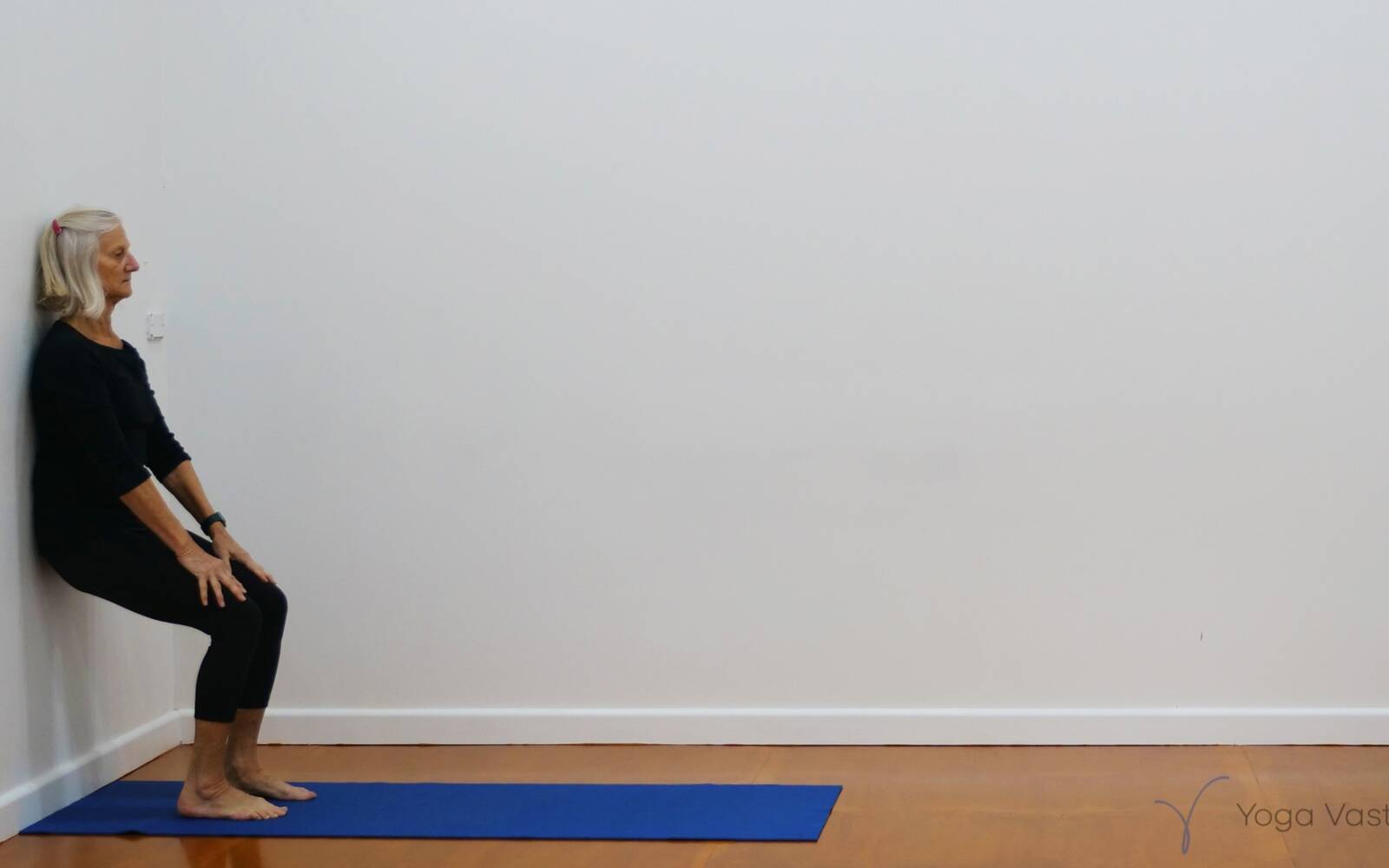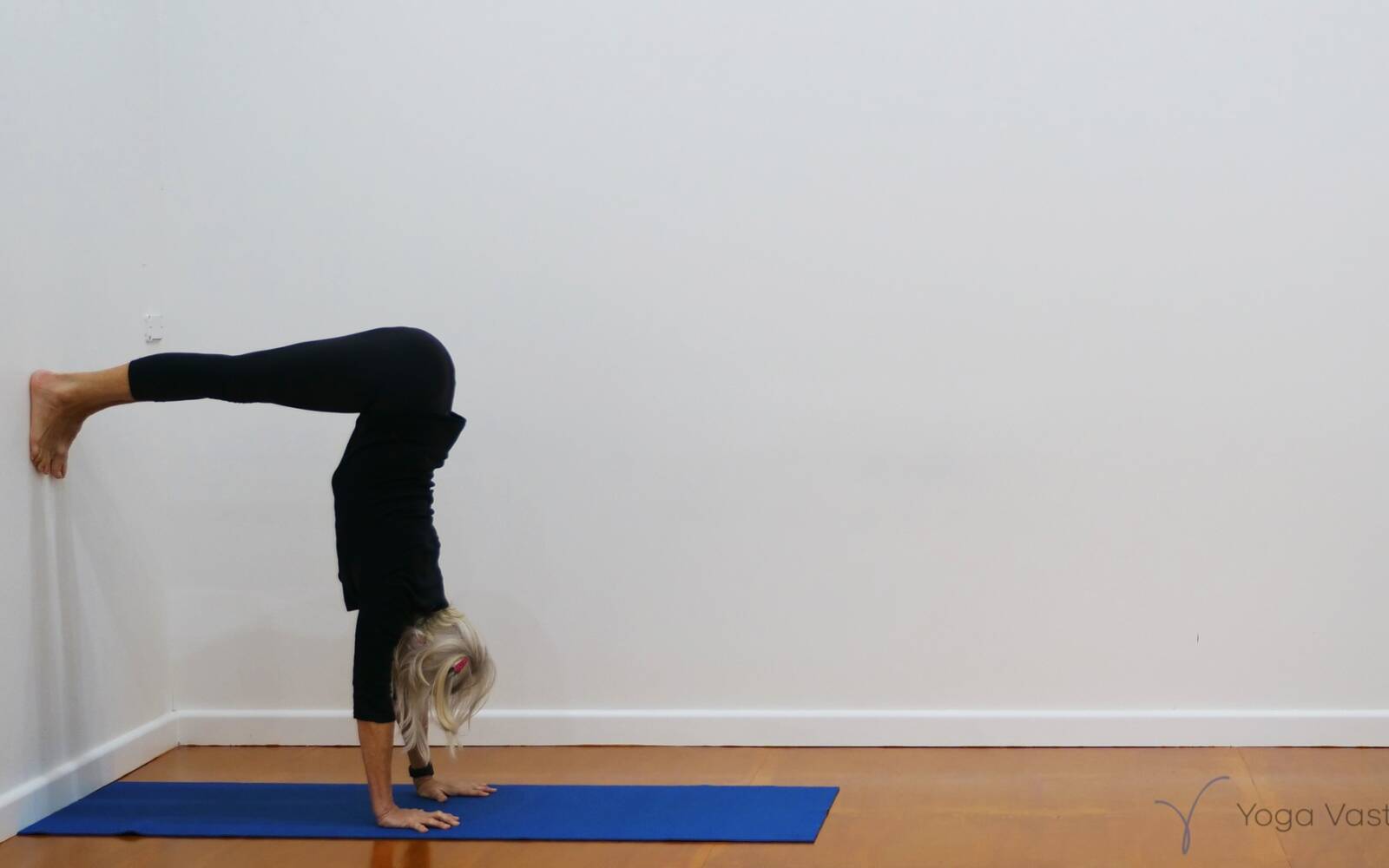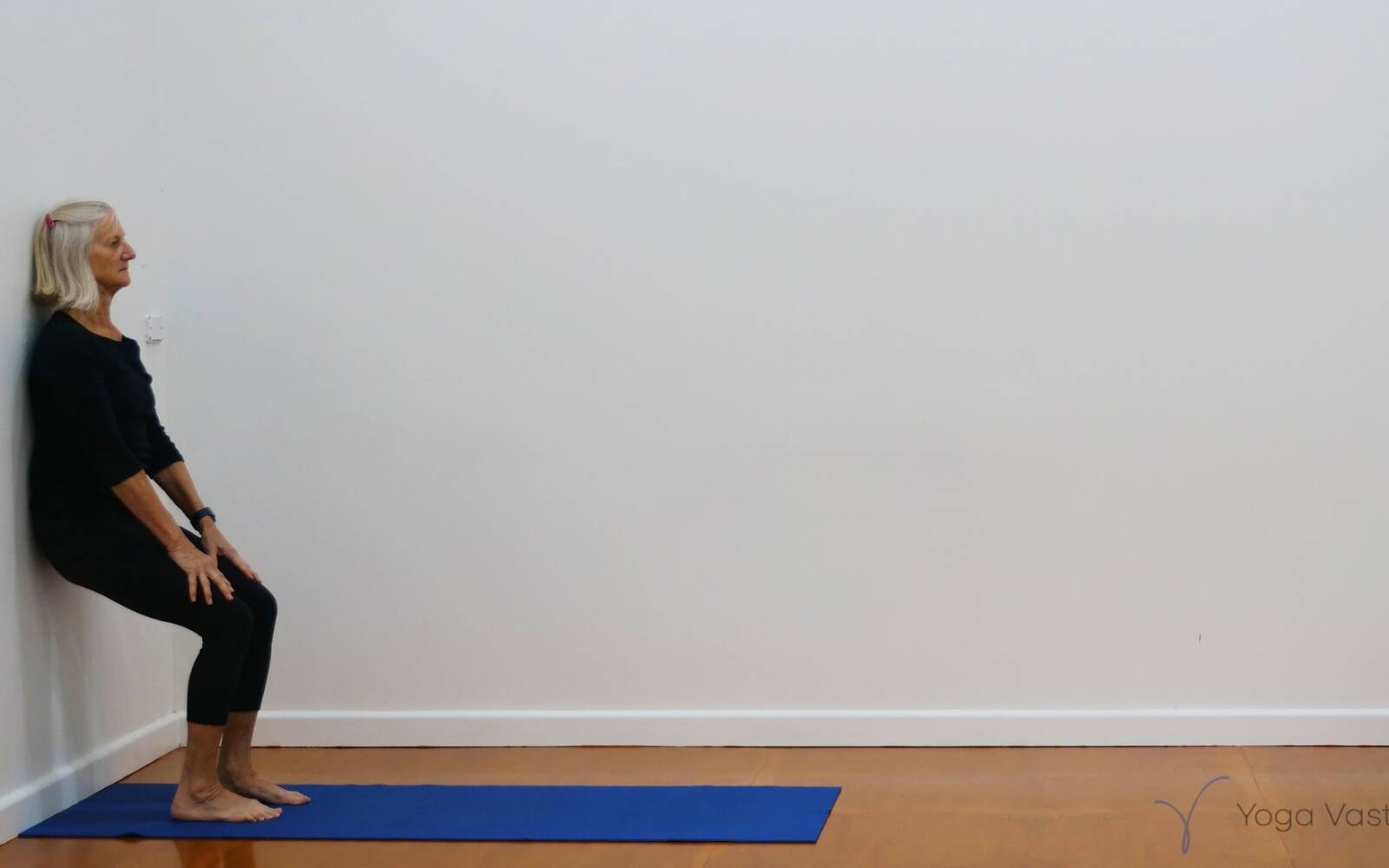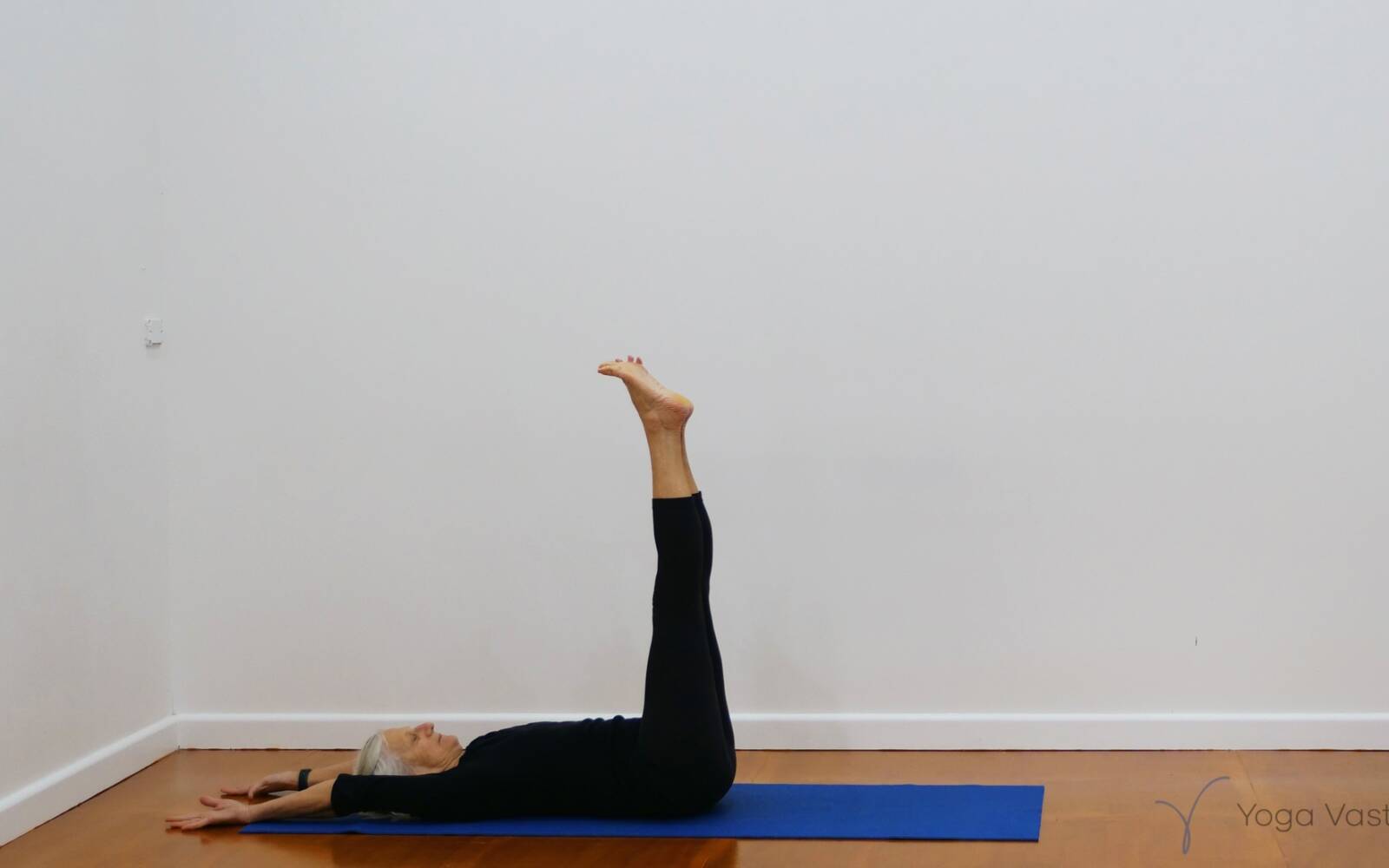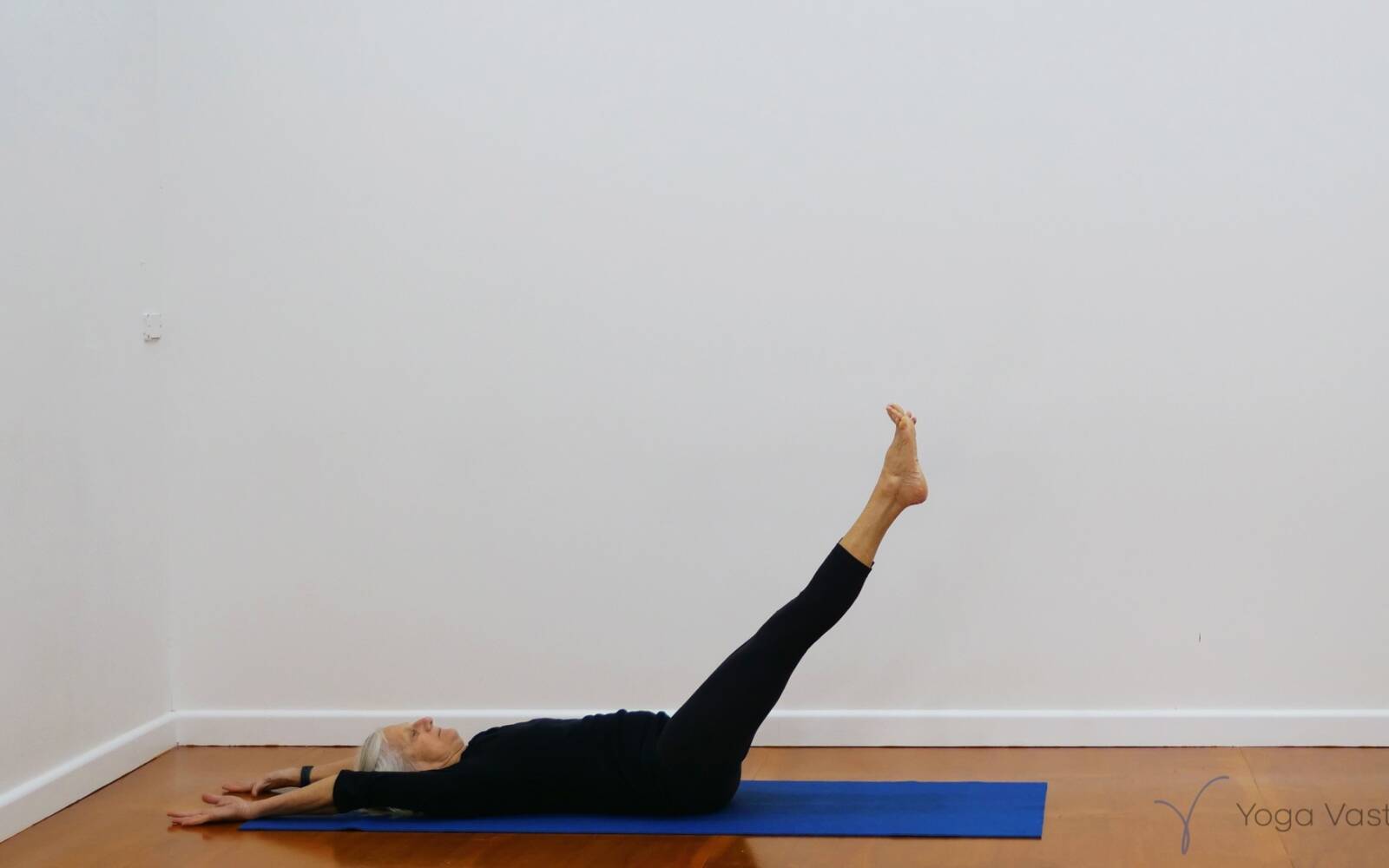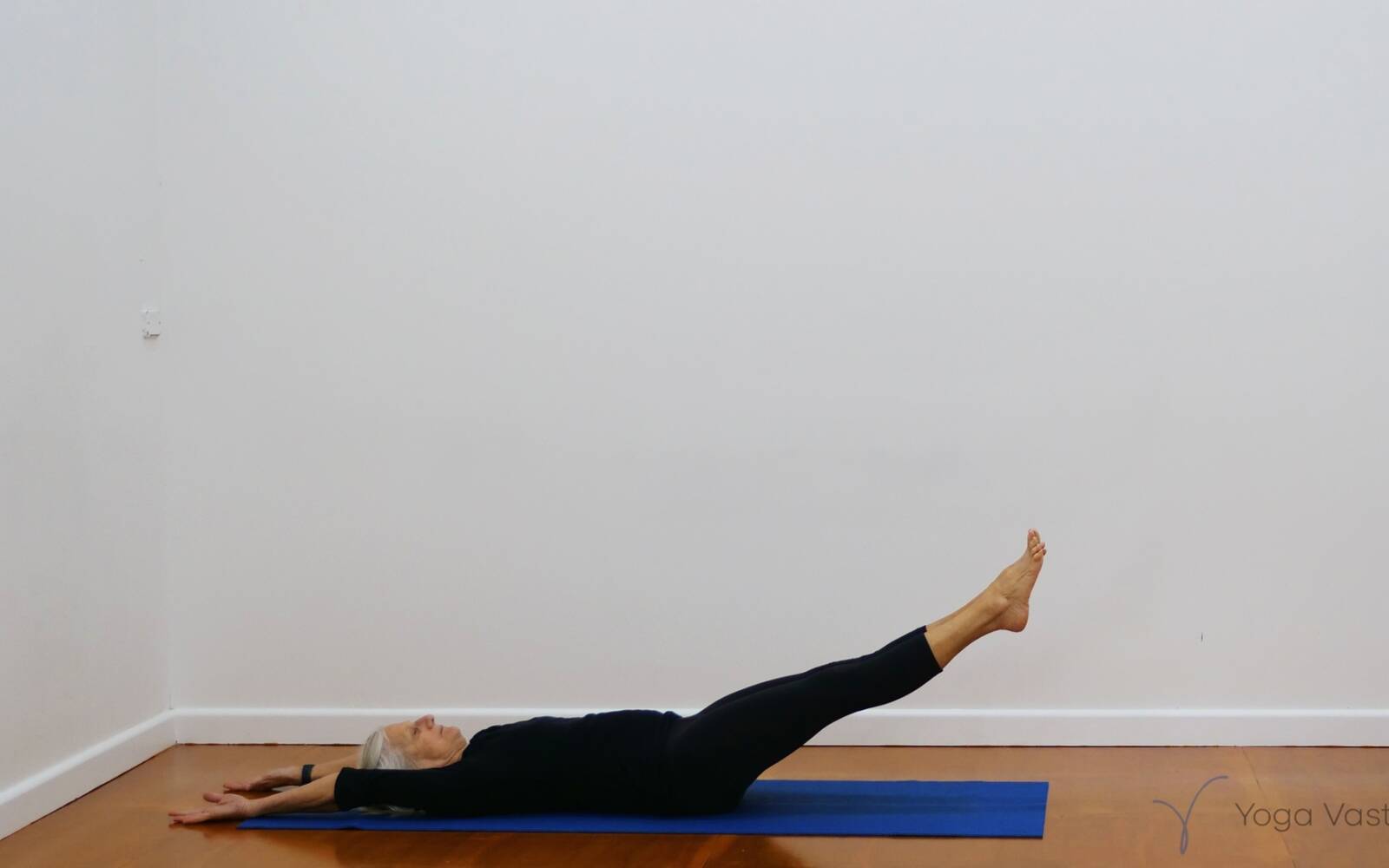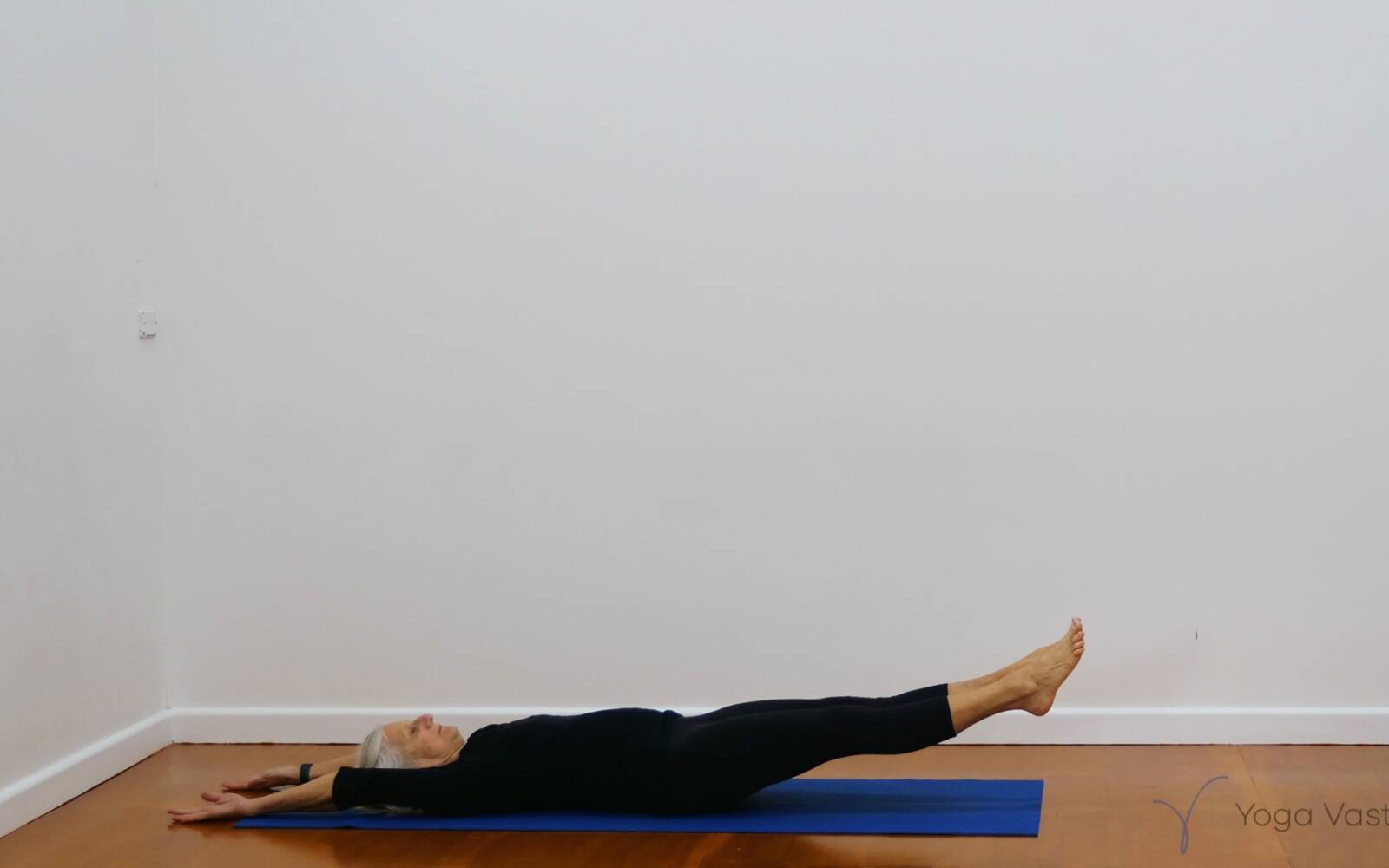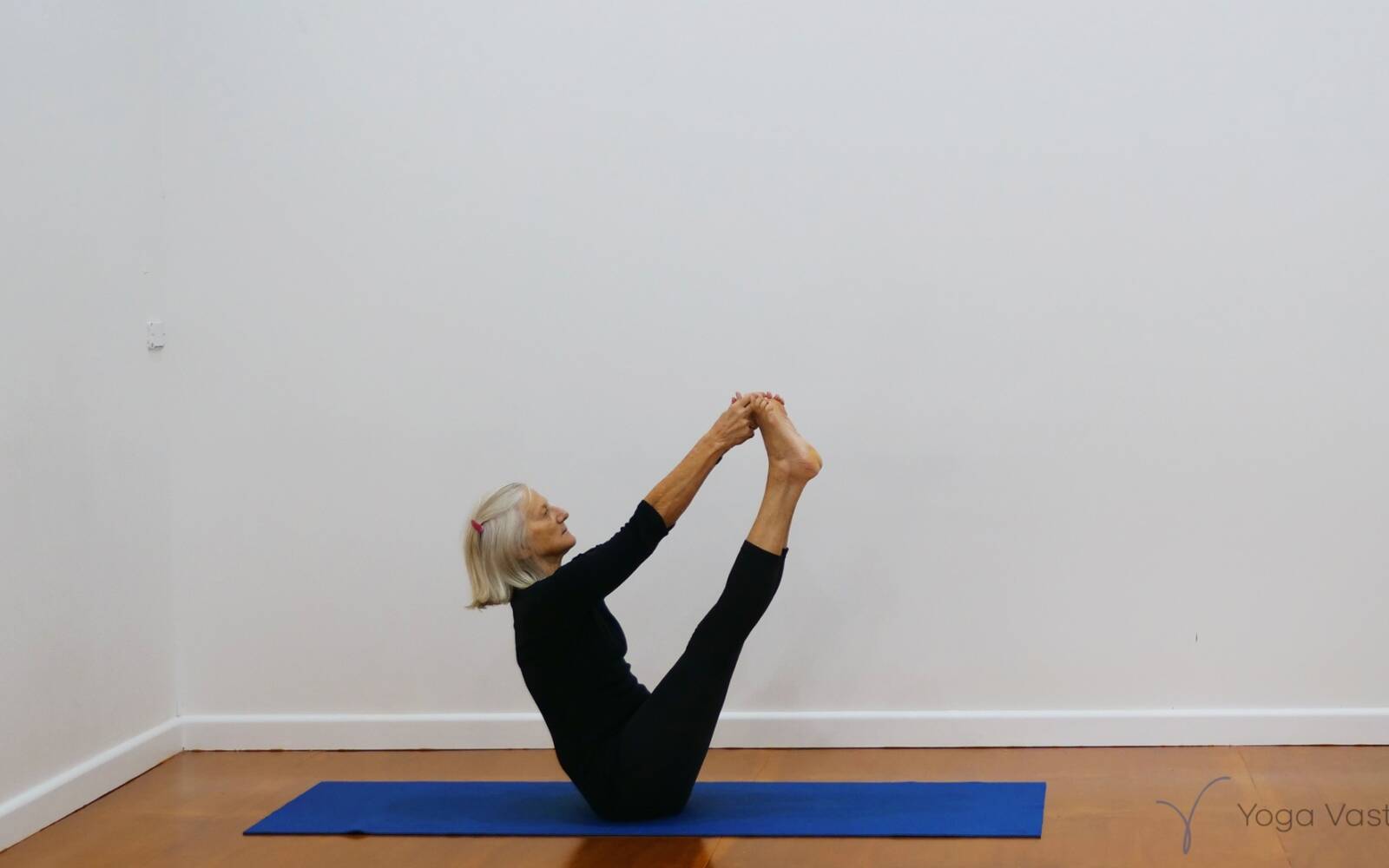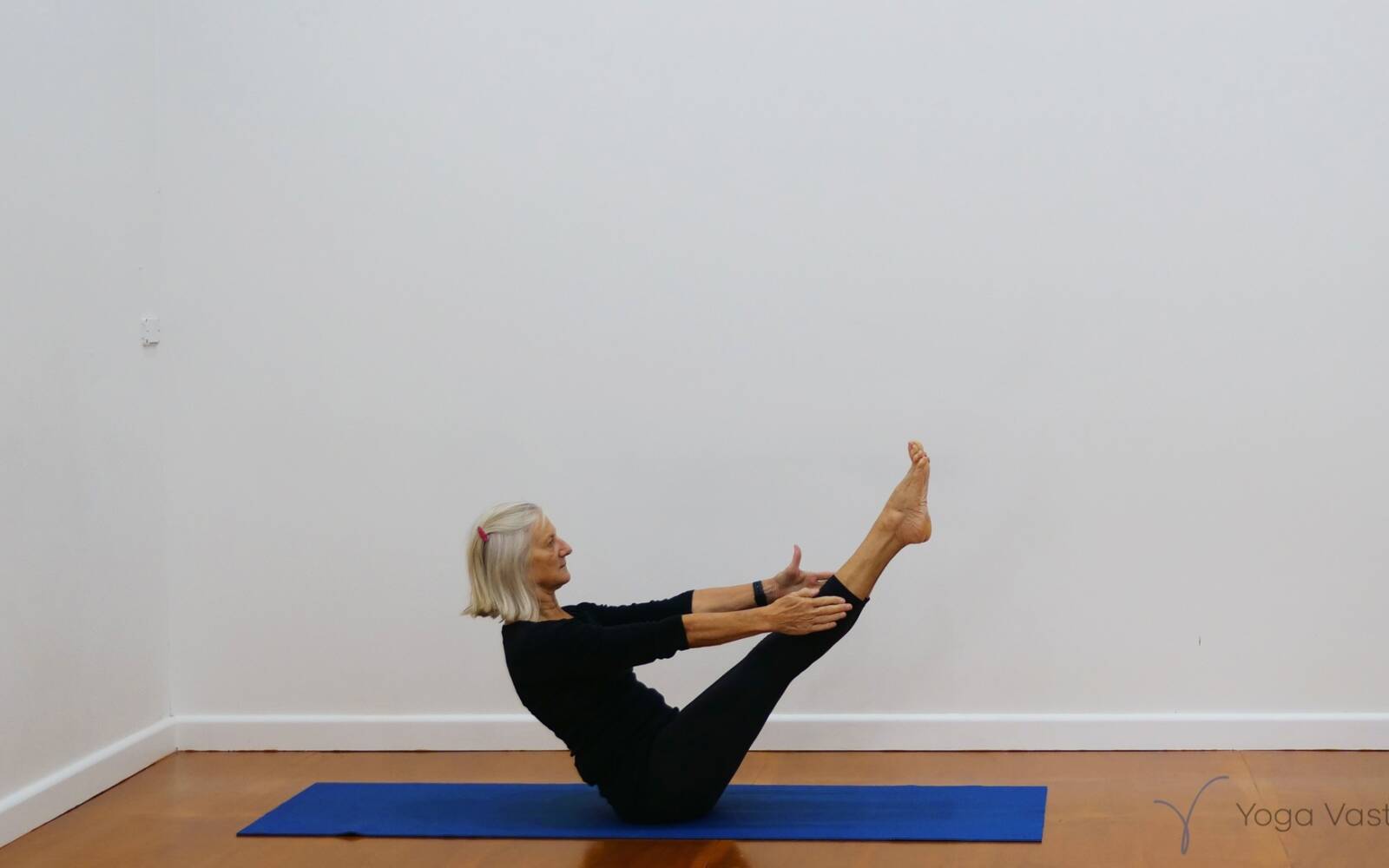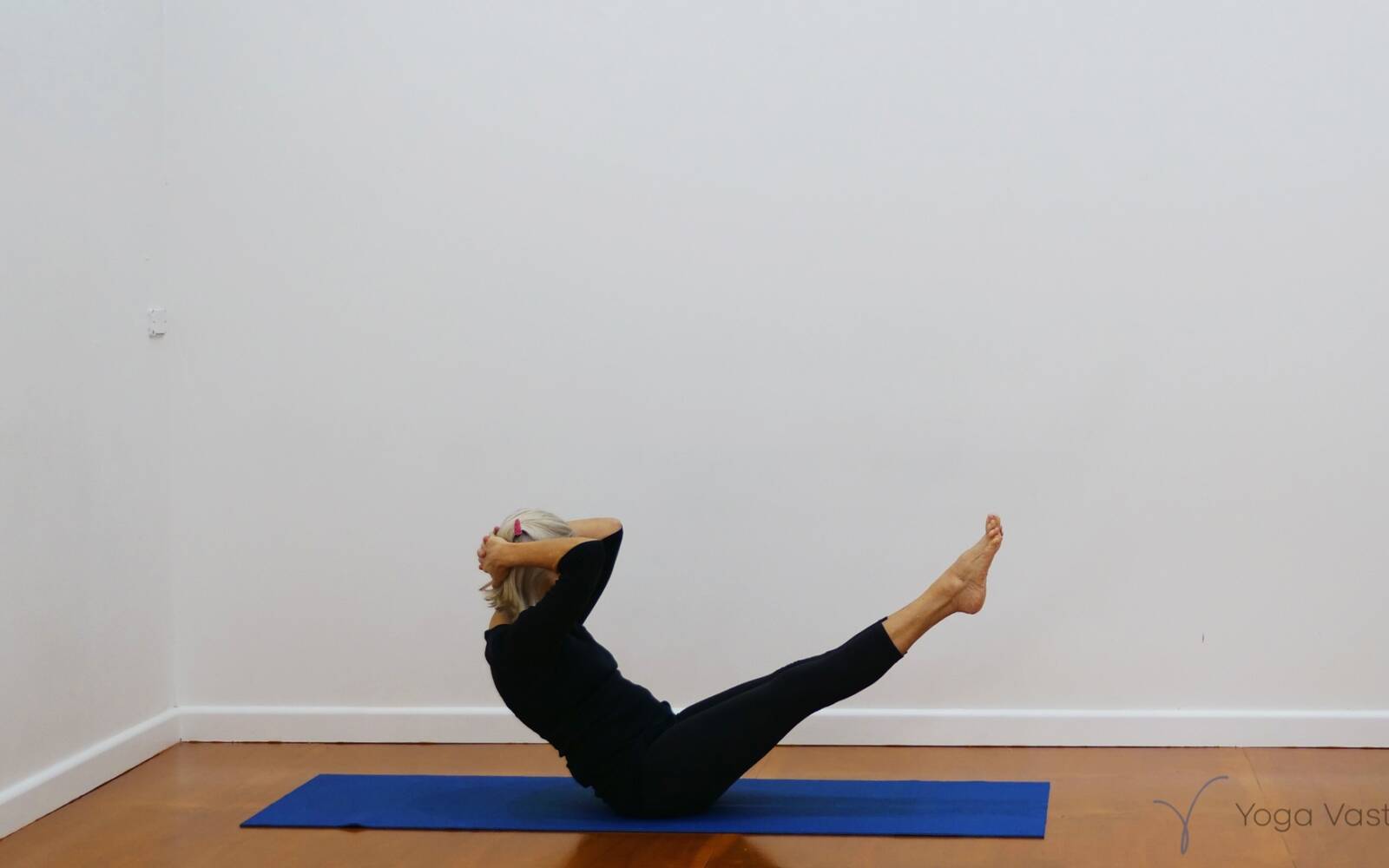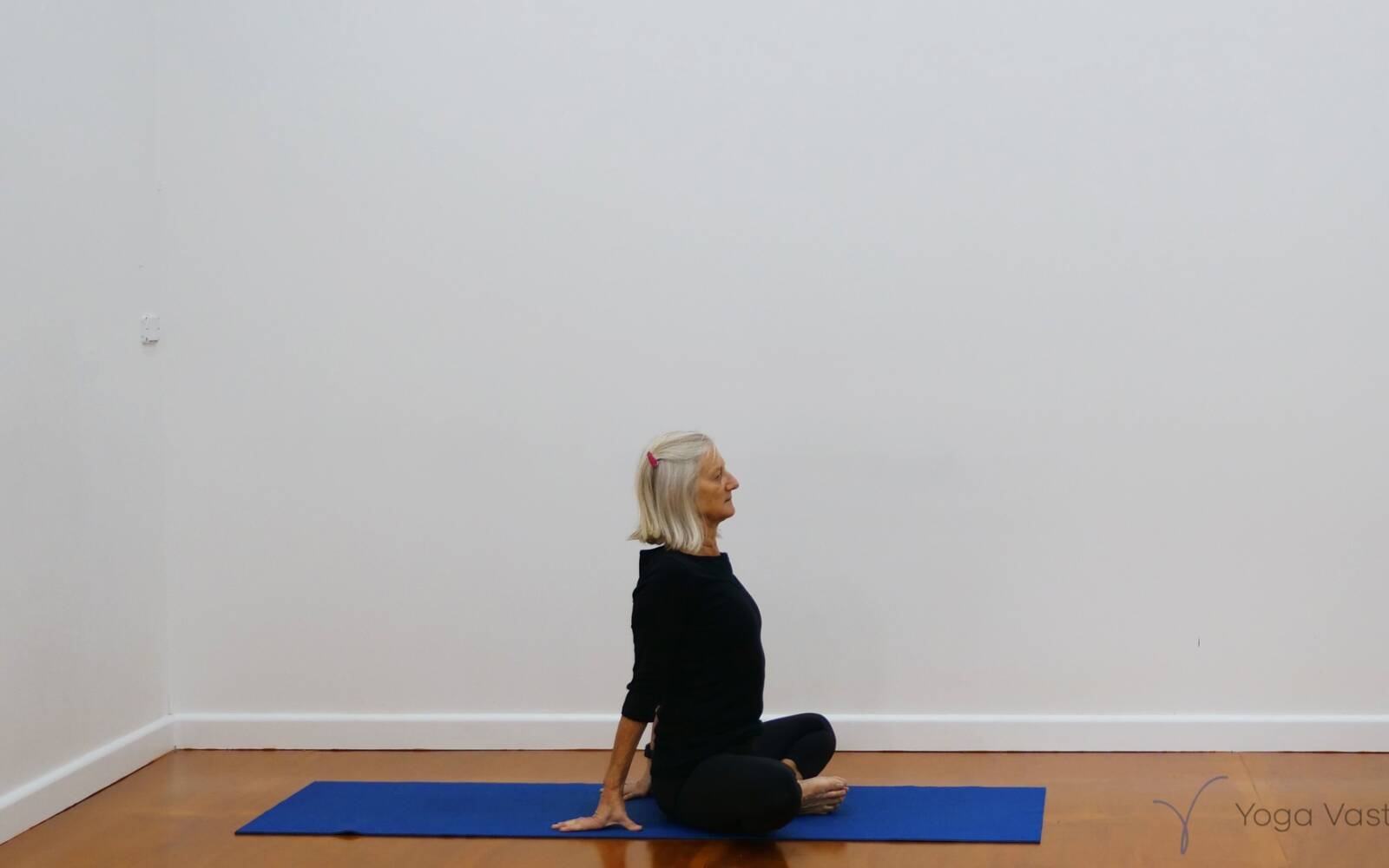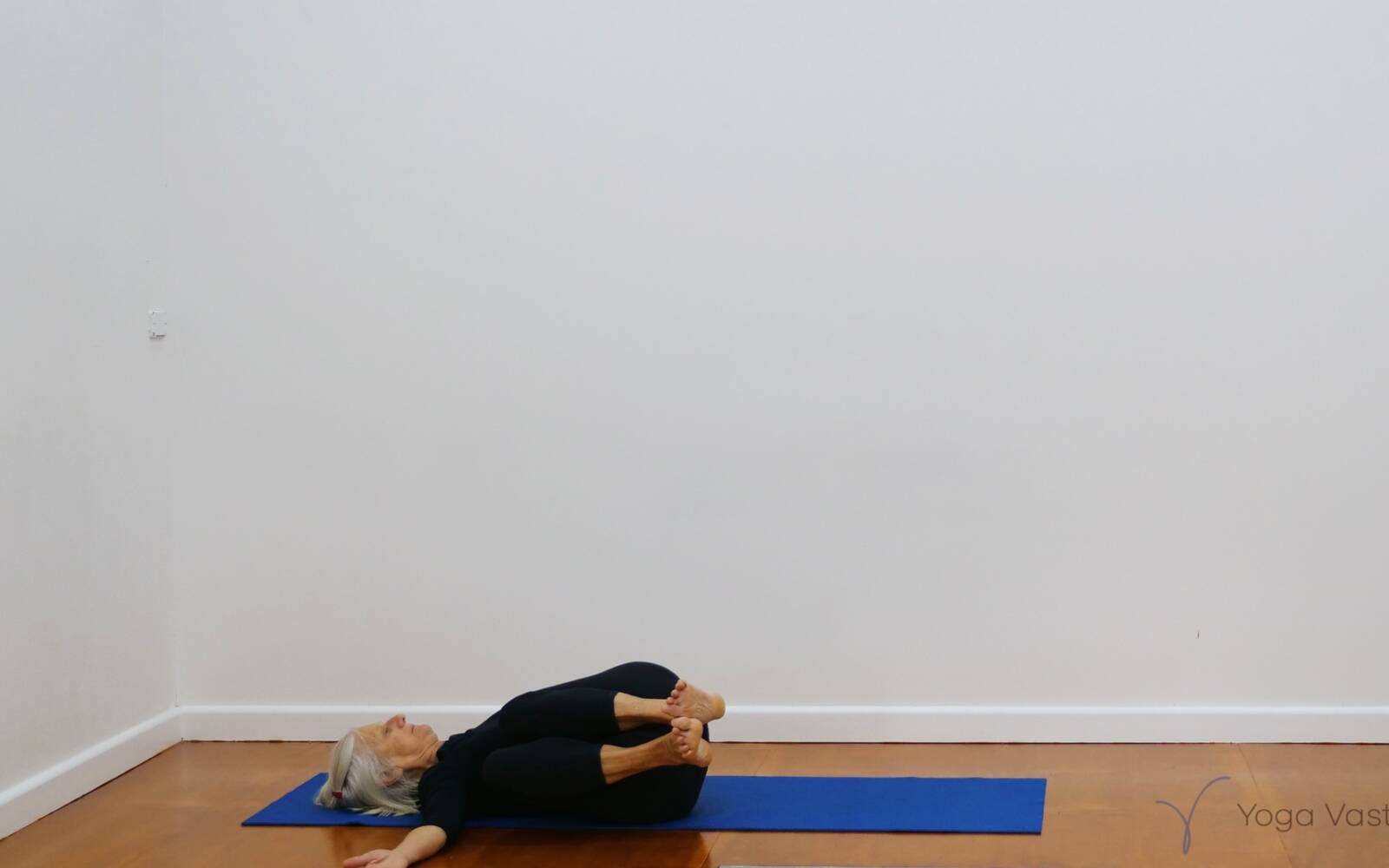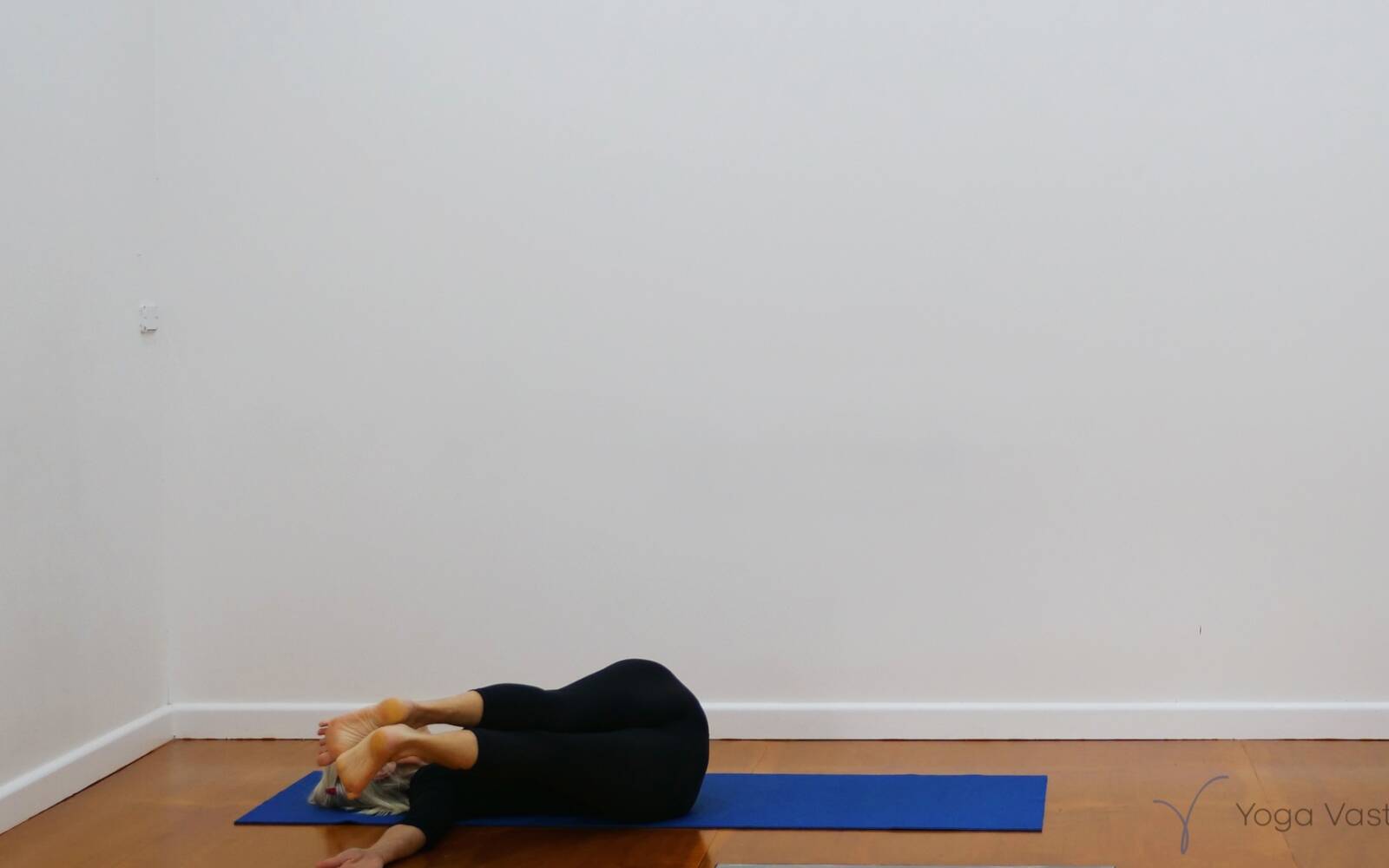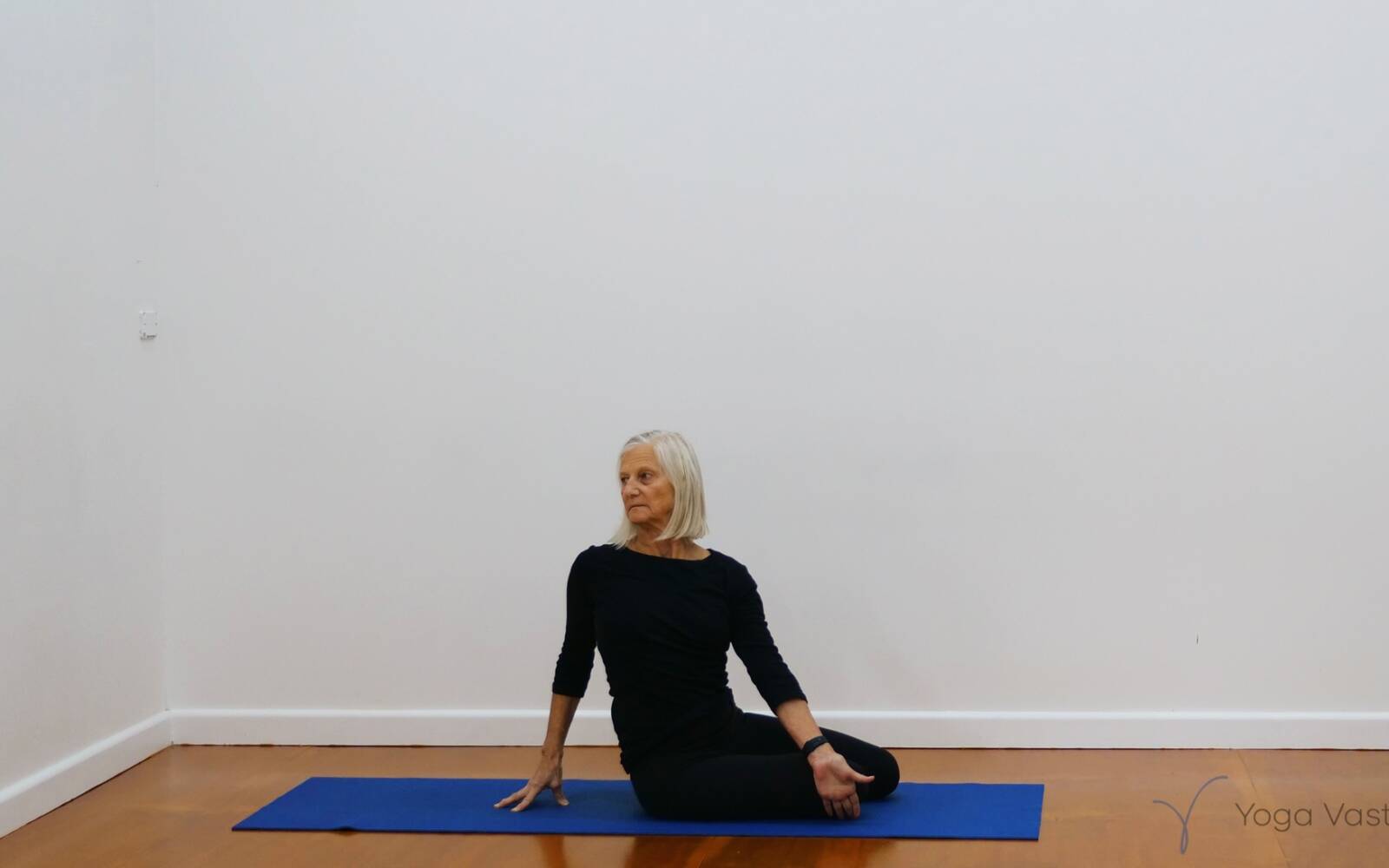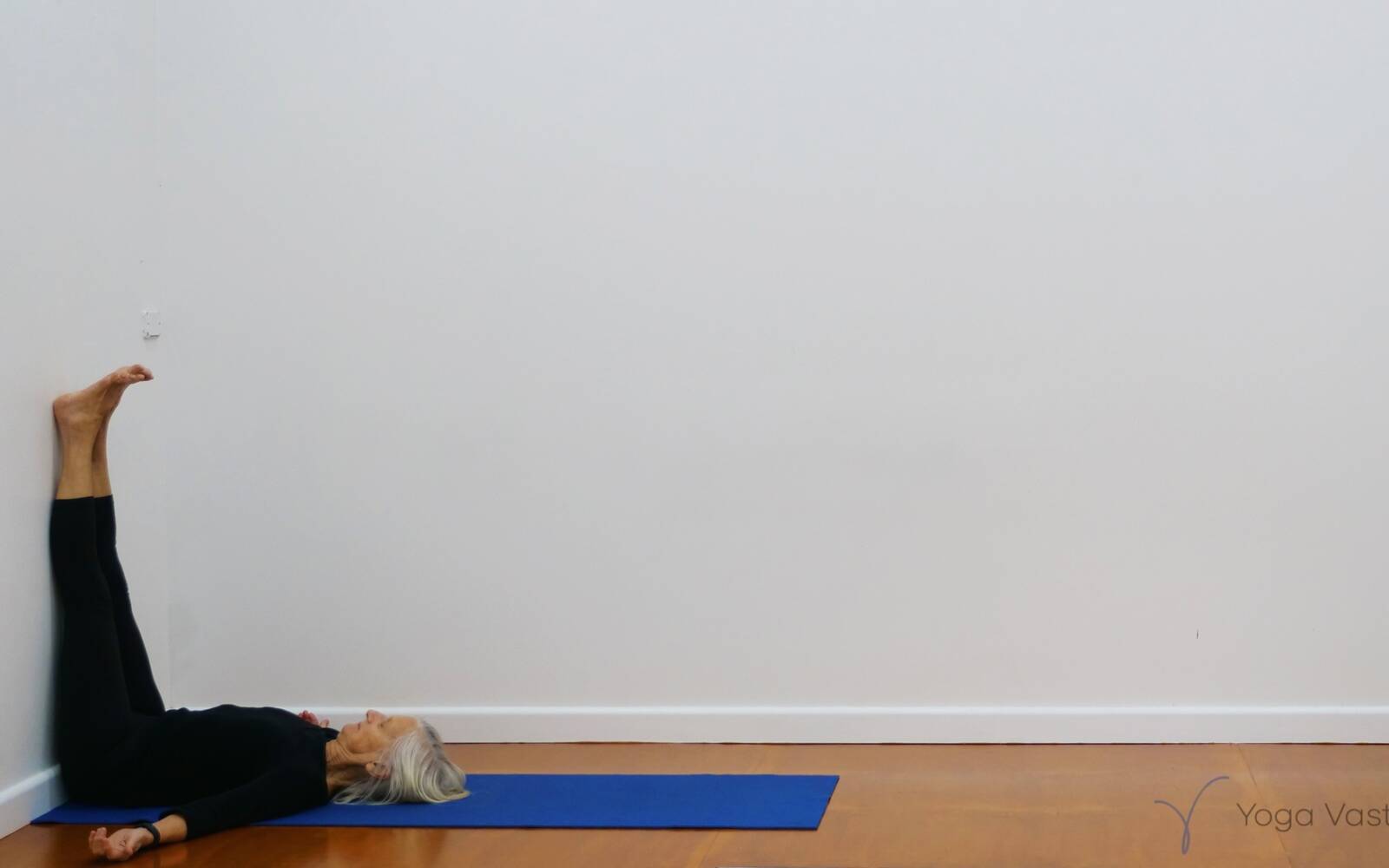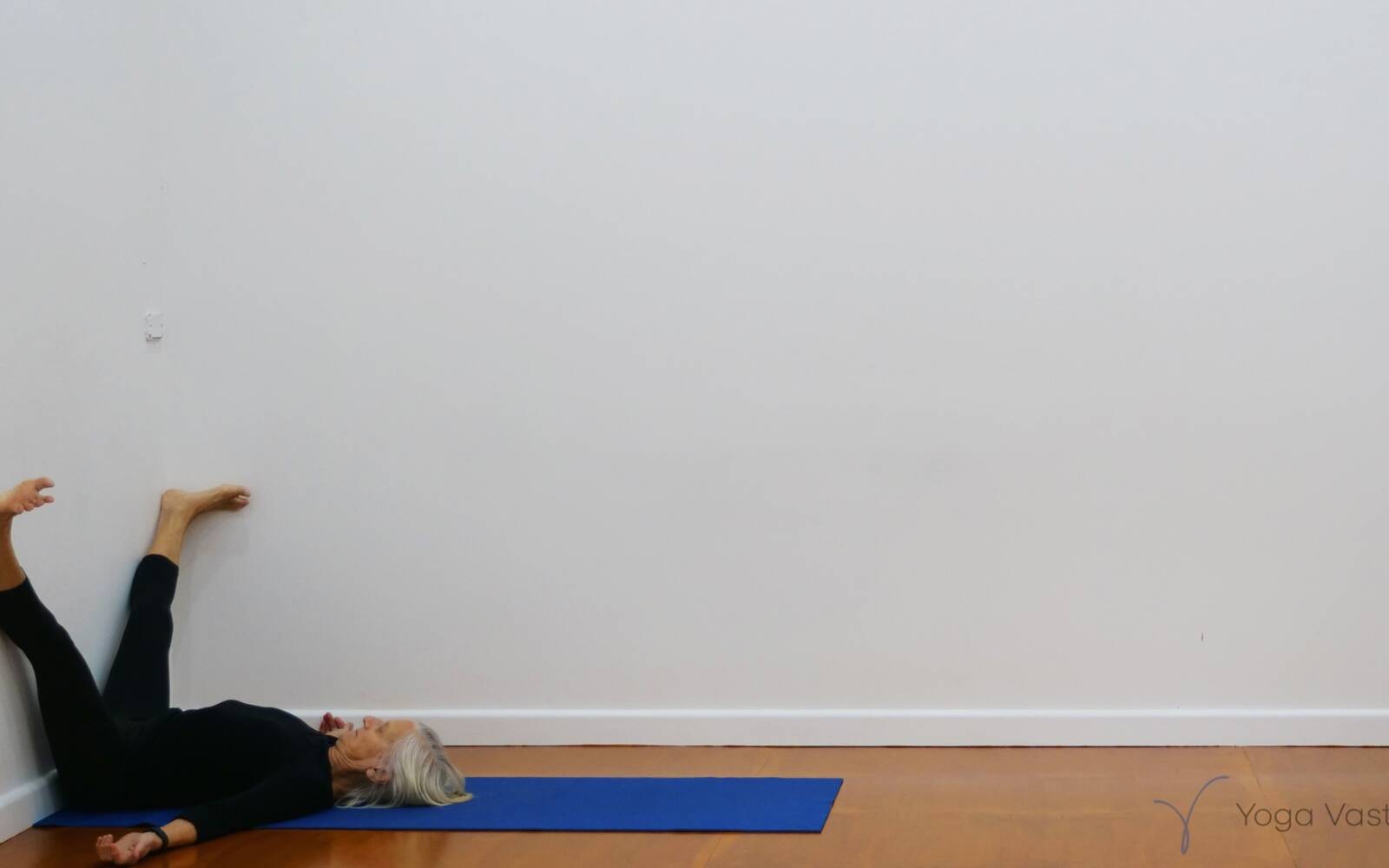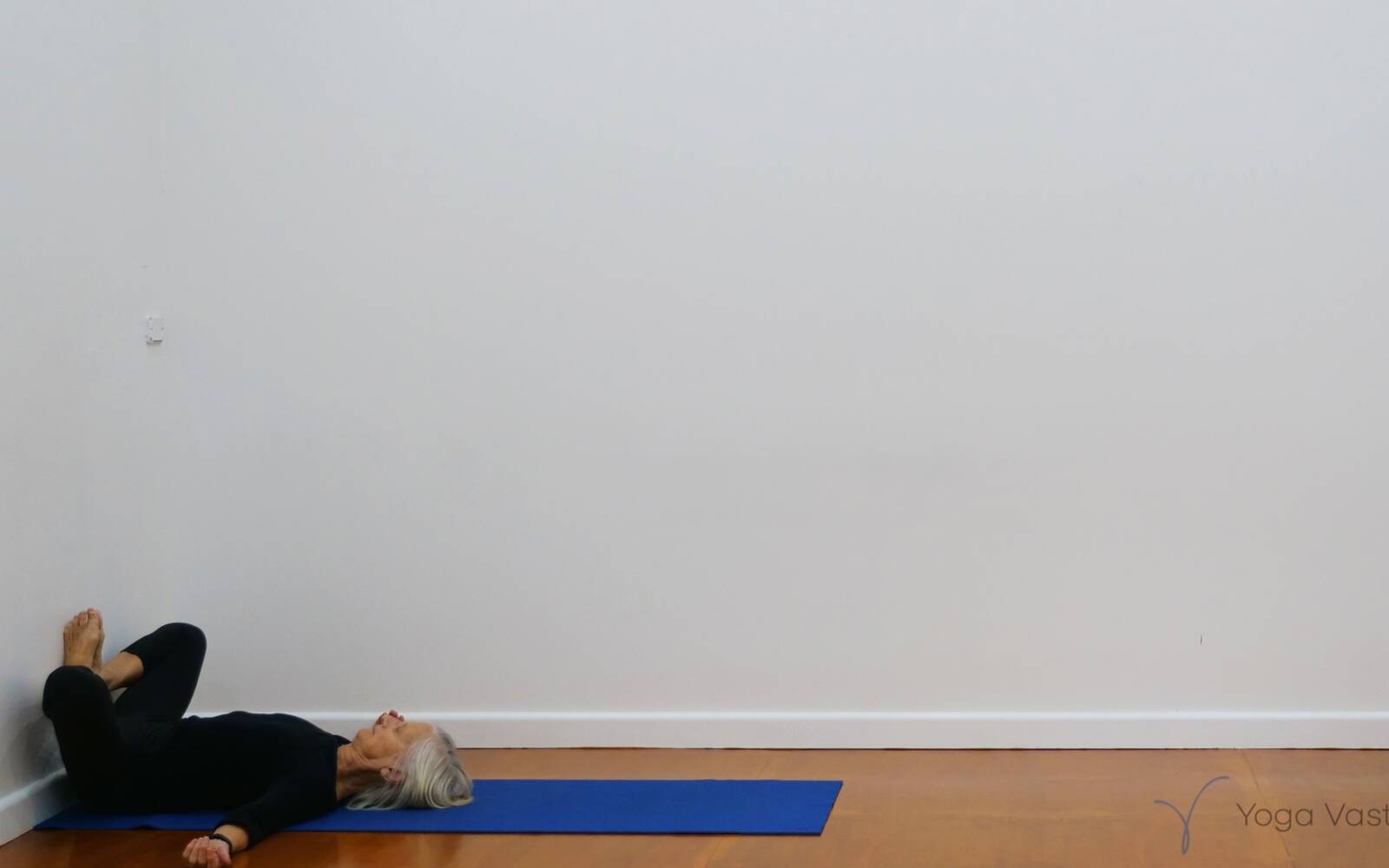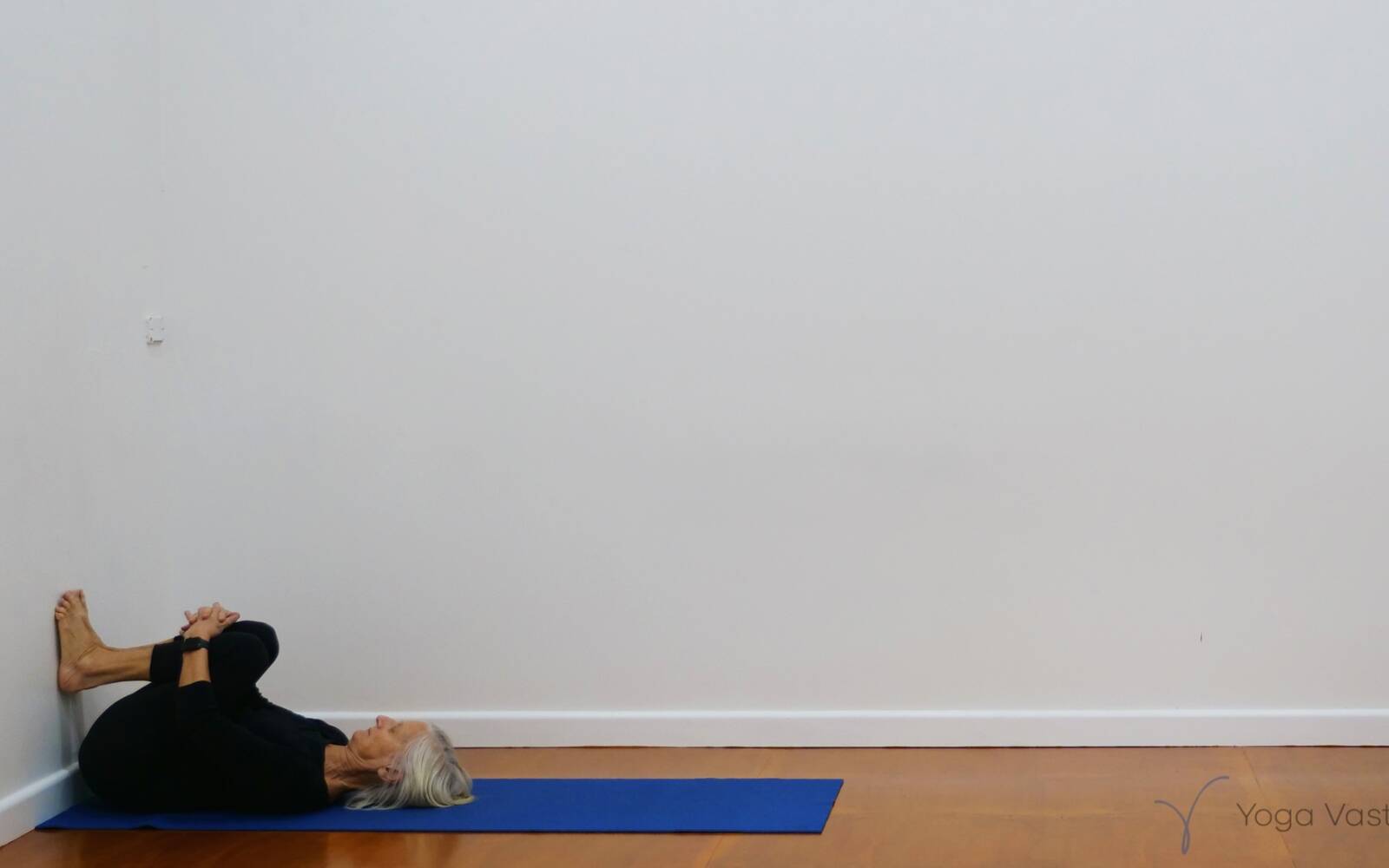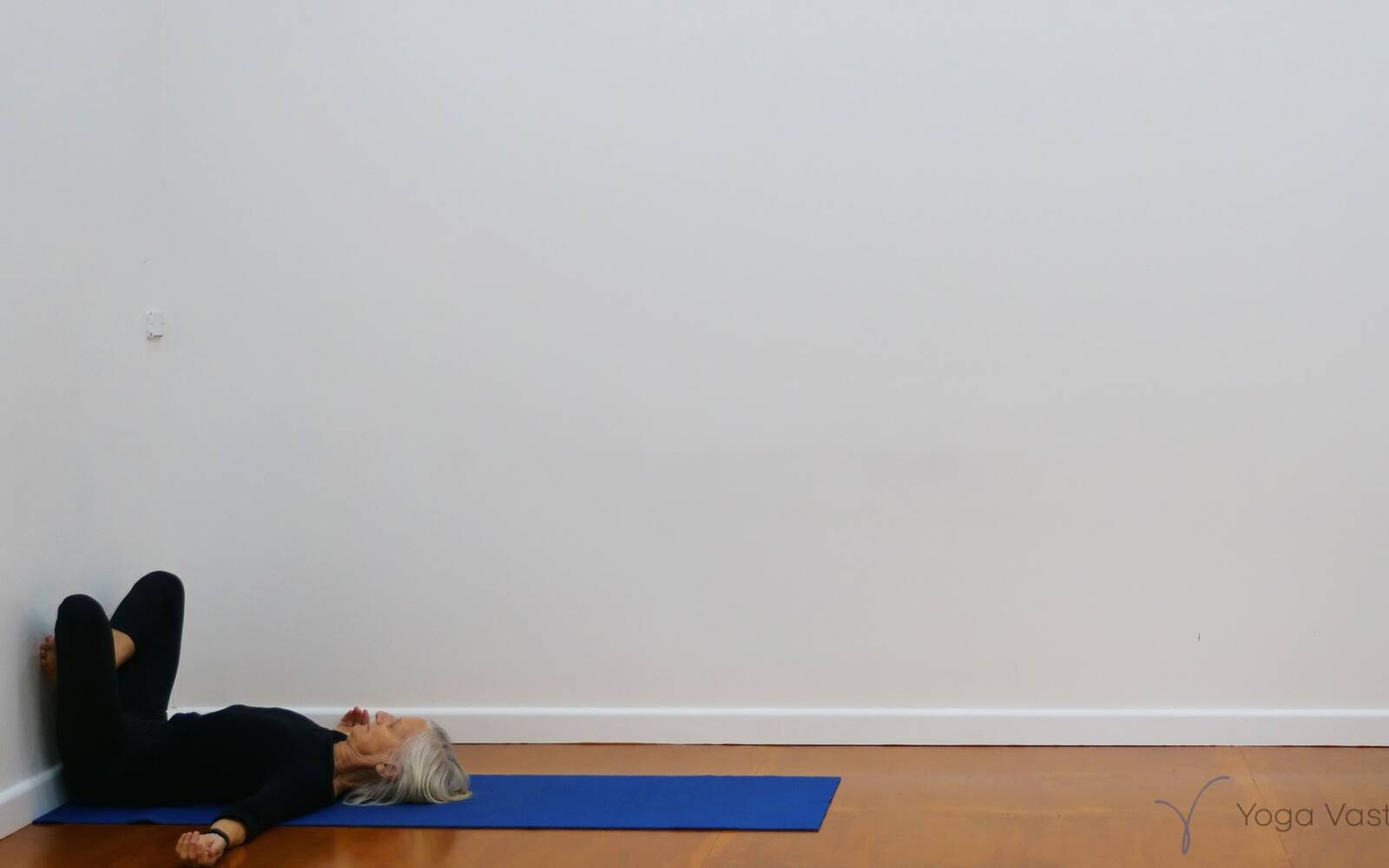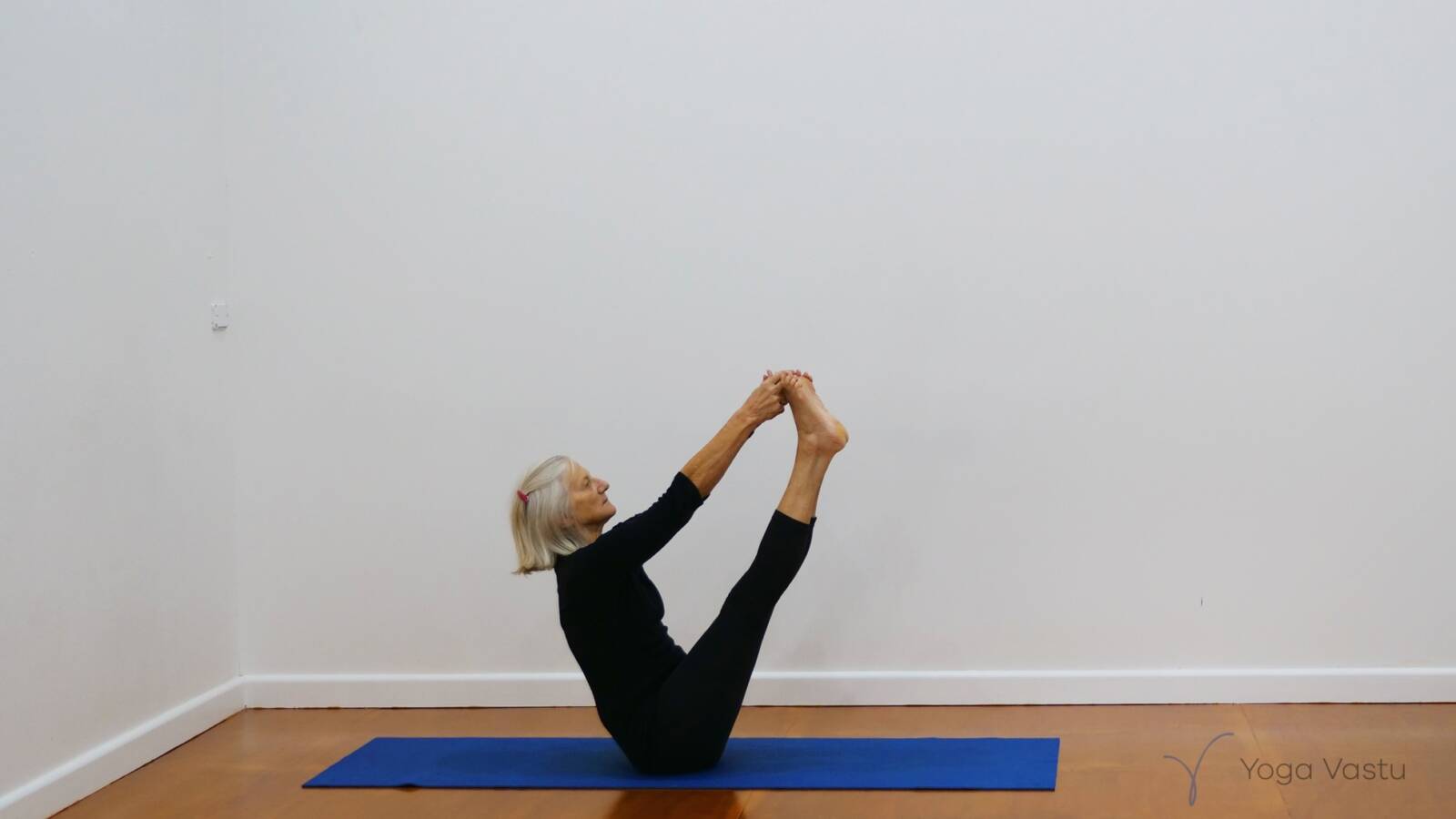This session aims to tone and strengthen the lower abdominal region and bring a sense of connection and life to that area. We add a few supine and seated twists to work into the hip/abdominal region from a different perspective. This brings both strength and release.
Set up in Supta Baddhakonasana, using a bolster, a rolled blanket under the outer thighs, and a blanket for under the head. Here we start to spread and open the area around the lower abdomen and the diaphragm.
Come up into forward Virasana, resting the forehead onto the bolster.
Adho Mukha Svanasana with the hands to the wall, palms flat, index fingers and thumbs up against the wall.
Stand. Placing the feet hip-width apart and about 1.5 feet away from the wall, rest the back of the pelvis onto the wall and slide down for supported Utkatasana. Actively press the lower back pelvis to the wall, and observe how much the lower abdominal area naturally follows that action and draws the lower abdomen back towards the spine.
Take the hands down and step the feet up the wall for Full Arm Balance preparation. Keep the arms and legs straight, and the legs parallel to the floor. Arms drawn up into the shoulders, front thighs up towards the ceiling. Feel the actions of the lower abdominal region as it draws up towards the spine and the back and front pelvis connecting.
Go to Utkatasana to the wall one more time to observe those same actions.
Urdhva Prasarita Padasana. Lie on your back with a good arm’s length space away from the wall. Extend the arms behind you, straight, and bend the knees and take them up to 90 degrees. If it is not possible to extend the arms overhead without bending the elbows, try taking the arms out to the sides, shoulder height, or a little lower. Hold for 40-60 seconds, pressing the lower back onto the floor. legs straight.
Bend the knees, feet to the floor and take a few breaths. Bring the arms up over the head, or to the sides if too strong. Bend the knees and take the legs up to 90 degrees. Working with the breath, take the legs down as far as possible without losing contact with the back pelvis pressed to the floor. Bend the knees and bring the legs back up to 90 degrees. Exhale down, inhale up, for 6-8 breaths.
Take a few moments to rest with the knees bent and feet to the floor.
One more version:
From 90 degrees, take the legs down in stages, holding them straight and together, to 60 degrees, 45 degrees, and then 30, then bend the knees to take the feet to the floor to quieten the breath. Keep the lower back pelvis glued to the floor.
Sit in Dandasana, and prepare for Ubhaya Padangusthasana. Holding the big toes, or using a belt for easier access to the feet, raise the legs up to about 65-75 degrees. Lift the sternum up and release the shoulders down. Legs straight.
Sit upright in Baddha Konasana, fingers pointing back behind you, and open the chest and lower pelvic area forward to bring a moment’s release to the abdomen.
Now go to Paripurna Navasana, holding for 30-45 seconds. Keep the pelvic rim broad and the legs and arms straight. Then go to Ardha Navasana where the upper back is a little more curved, the legs at about 30 degrees, straight and the arms bent, hands clasped behind for head.
Baddha Konasana upright.
Bharadvajasana 1, to release any tension in the lower abdominal area. Turn to the Right and then change to turn to the Left.
Jathara Parivartanasana, bent legs first and then with straight legs. Keep turning the lower waist down towards the floor in the opposite direction to the legs, as you bring the knees towards the armpit with bent legs, and then the feet towards the hand with straight legs.
Set up for legs up the wall straight, buttocks and back of the thighs to the wall and the back supported fully by the floor. Stay for a minute, and then change to Upavishtha Konasana, hold for one minute, and then bring the legs to Baddha Konasana.
Finally, bend the knees into the chest for a few breaths, and then go to simple cross legs resting the legs to the wall. Change
This final quietening pose will serve as Savasana today.
Video stills from this sequence


